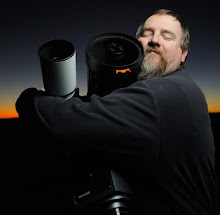
In astronomy, the Pleiades (Messier object 45) are an open star cluster in the constellation of Taurus. It is among the nearest star clusters. It is the cluster most obvious to the naked eye in the night sky. Pleiades has several meanings in different cultures and traditions.
The cluster is dominated by hot blue stars that have formed within the last 100 million years. Dust that forms a faint reflection nebulosity around the brightest stars was thought at first to be left over from the formation of the cluster (hence the alternate name Maia Nebula after the star Maia), but is now known to be an unrelated dust cloud in the interstellar medium that the stars are currently passing through. Astronomers estimate that the cluster will survive for about another 250 million years, after which it will disperse due to gravitational interactions with its galactic neighborhood.
Eagle Eye Observatory, Canyon of the Eagles.
Exposure: 50 x 2.5 minutes
Camera: Modified Canon Digital Rebel XT (350D)
Scope: Astro-Tech AT80ED 80mm APO refractor, William Optics 0.8 FFIII field flattener (new!)
Mount: Meade LXD650
Guider: Short Tube 80, Meade DSI
Filter: None
Software: PHD Guiding, Nebulosity, Photoshop





No comments:
Post a Comment